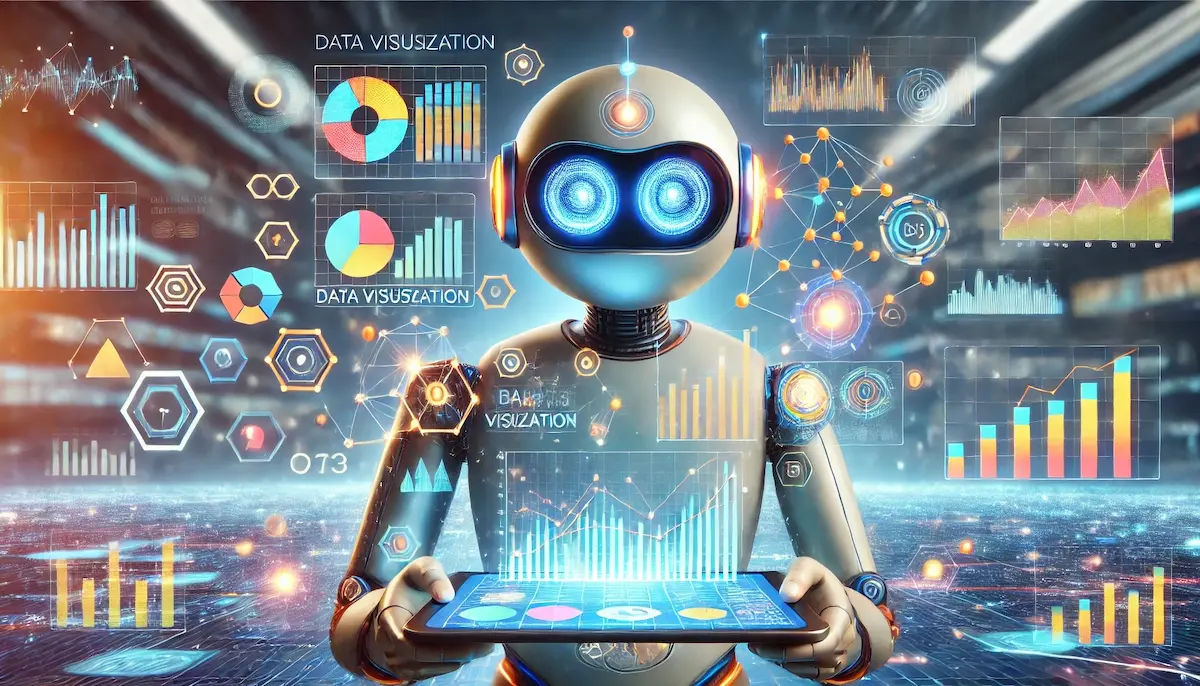Data visualization is the graphical representation of information and data. By using visual elements like charts, graphs, and maps, data visualization tools provide an accessible way to see and understand trends, outliers, and patterns in data. It’s a powerful way to communicate complex data insights, making them easier to comprehend and act upon.
What is Data Visualization?
Data visualization transforms raw data into a visual context, such as a chart or map, to make the data easier to understand. This process helps in highlighting significant relationships within the data, identifying trends, and conveying insights that can be challenging to grasp through text-based data alone. Effective data visualization can make complex datasets more accessible, understandable, and usable.
Types of Data Visualization
There are various types of data visualizations, each suited to different kinds of data and purposes. Here are some common types:
Charts
- Bar Charts: Ideal for comparing quantities across different categories.
- Line Charts: Used to show trends over time.
- Pie Charts: Display parts of a whole, useful for showing percentage distributions.
- Scatter Plots: Show relationships between two variables, highlighting correlations or patterns.
Graphs
- Area Graphs: Similar to line graphs but with the area below the line filled in, showing volume over time.
- Bubble Graphs: Like scatter plots but with an added dimension represented by the size of the bubbles.
Maps
- Geographical Maps: Show data related to specific locations or regions.
- Heat Maps: Use color to represent data density or intensity over a geographical area or matrix.
Infographics
Infographics combine various data visualizations with descriptive text and graphics to tell a story or explain complex information clearly and engagingly.
Dashboards
Dashboards integrate multiple visualizations and data sources into one interface, providing a comprehensive view of key metrics and insights for quick, data-driven decision-making.
Benefits of Data Visualization
Data visualization offers numerous advantages that can significantly enhance the understanding and use of data.
Simplifies Complex Data
By representing complex datasets visually, data visualization simplifies the understanding and interpretation of the data. This makes it easier for stakeholders to grasp intricate details and relationships within the data.
Reveals Patterns and Trends
Visualizations can quickly highlight patterns, trends, and outliers that might not be immediately evident in raw data. This can be crucial for identifying opportunities, risks, and areas needing attention.
Enhances Communication
Visual data is easier to share and understand across different audiences, including those without a technical background. Effective visualizations can convey complex insights succinctly and compellingly.
Supports Better Decision-Making
By providing a clear picture of the data, visualizations help in making informed decisions. Decision-makers can quickly see the impact of different variables and scenarios, leading to more strategic and effective actions.
Increases Engagement
Interactive and visually appealing data presentations can capture and maintain the audience’s interest, making data more engaging and accessible.
Tools for Data Visualization
Several tools and software are available to create data visualizations, ranging from simple to highly sophisticated options.
Basic Tools
- Microsoft Excel: Offers basic charting and graphing capabilities.
- Google Charts: Provides a variety of simple, customizable chart options for free.
Advanced Tools
- Tableau: A powerful tool for creating interactive, shareable dashboards and visualizations.
- Power BI: Microsoft’s business analytics service that provides interactive visualizations and business intelligence capabilities.
- D3.js: A JavaScript library for producing dynamic, interactive data visualizations in web browsers.
- QlikView: Offers guided analytics and self-service data discovery.
Best Practices in Data Visualization
To ensure data visualizations are effective and meaningful, consider the following best practices:
Know Your Audience
Understand who will be viewing the data visualization and tailor the complexity and detail accordingly. Different audiences may have varying levels of expertise and interest in the data.
Choose the Right Type of Visualization
Select a visualization type that best represents the data and highlights the insights you want to communicate. The wrong type of chart can mislead or confuse the audience.
Keep It Simple
Avoid cluttering the visualization with too much information. Focus on the key insights and use clear, concise labels and legends.
Use Color Wisely
Colors should enhance the visualization, not distract from it. Use color to highlight important data points and maintain consistency throughout the visualizations.
Provide Context
Ensure the visualization includes context, such as titles, labels, and notes, to help the audience understand the data and its significance.
Conclusion
Data visualization is a powerful tool for making data more accessible, understandable, and actionable. By transforming complex datasets into clear and engaging visuals, organizations can unlock valuable insights, drive better decision-making, and communicate more effectively. As data continues to grow in volume and complexity, the importance of effective data visualization will only increase.
Blockfine thanks you for reading and hopes you found this article helpful.
